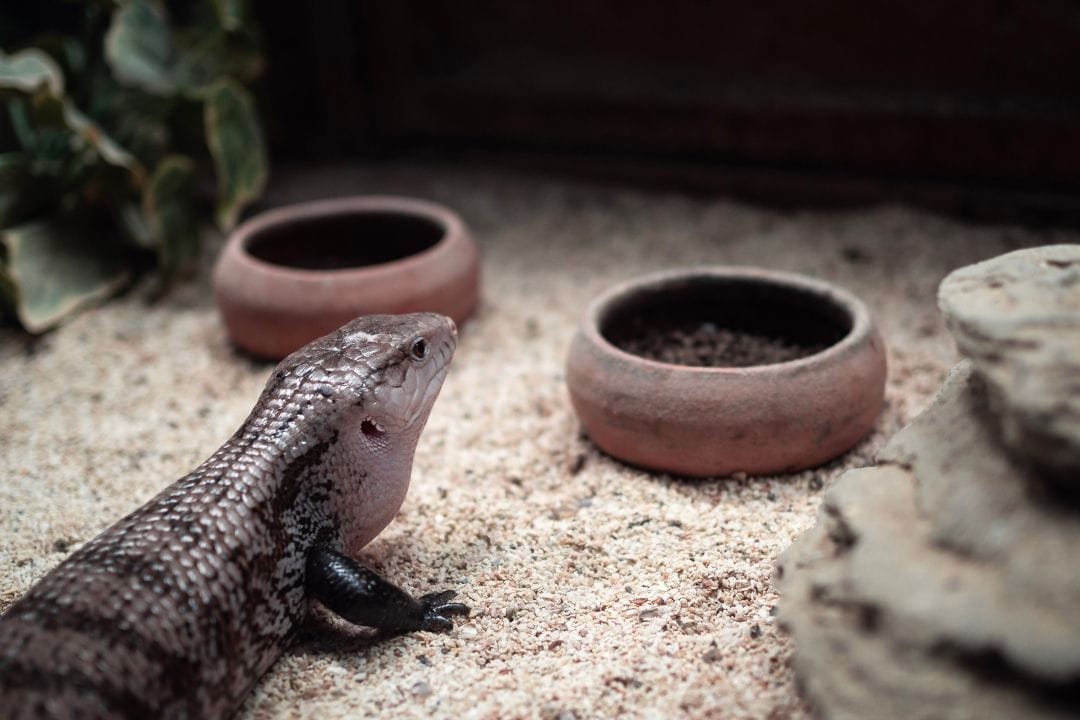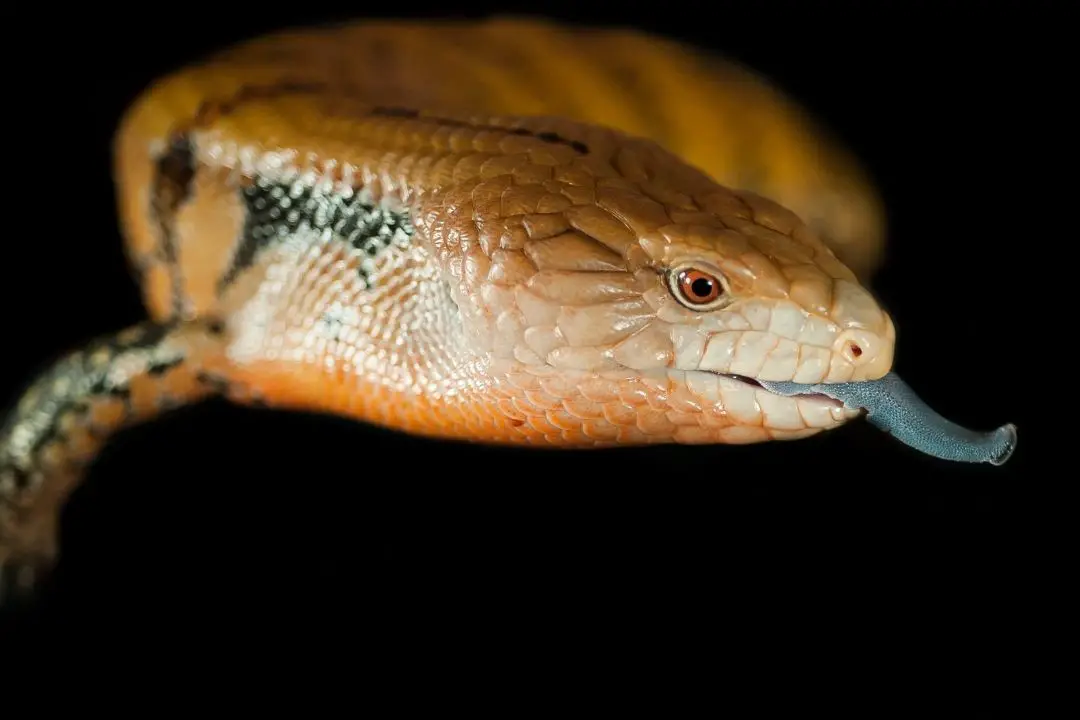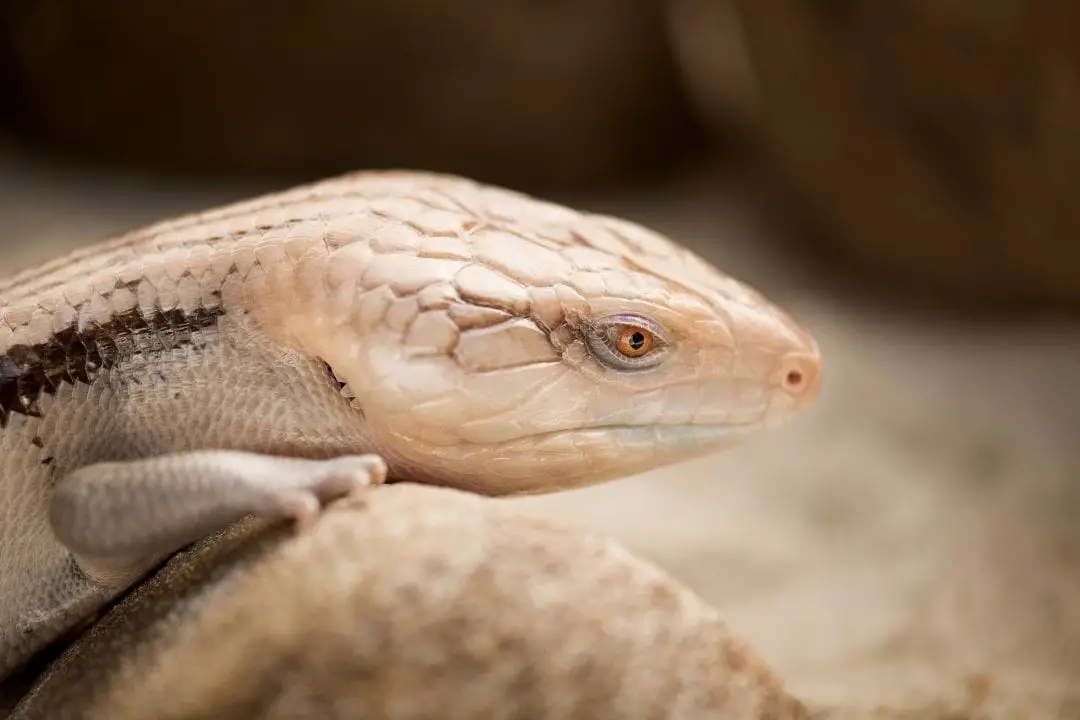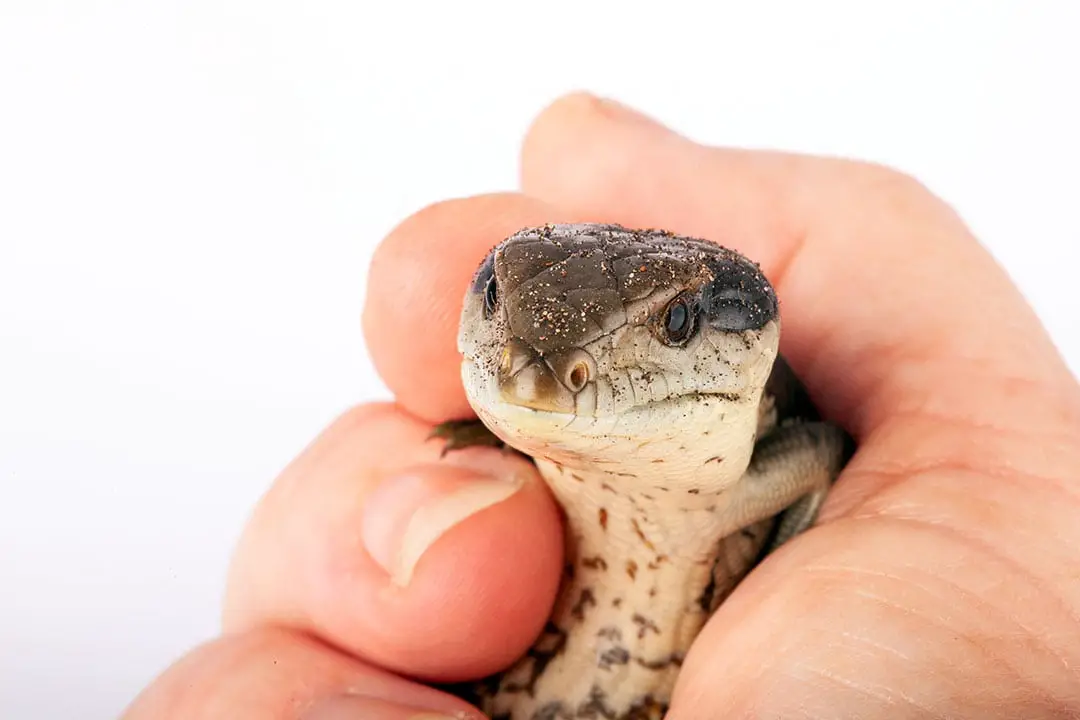Blue-tongued skinks are several species in the genus Tiliqua that are native to Australia and Asia. There are several species commonly found in captivity.
The most common captive-bred animal is the Northern blue-tongued skink (Tiliqua scincoides intermedia).
If you are interested in owning a blue-tongued skink, you may be wondering:
Are Blue Tongue Skinks a good idea for a beginner reptile owner?
On average, the answer is a resounding yes, blue tongue skinks are a good species for a beginner lizard owner. Captive-bred blue-tongued skinks are easy to handle and tame down. They also tend to have easy care requirements.
For a complete guide to enclosure setup, feeding, daily care and breeding,
check out my Blue Tongue Skink Care Sheet Here
Why They Make Good Pets
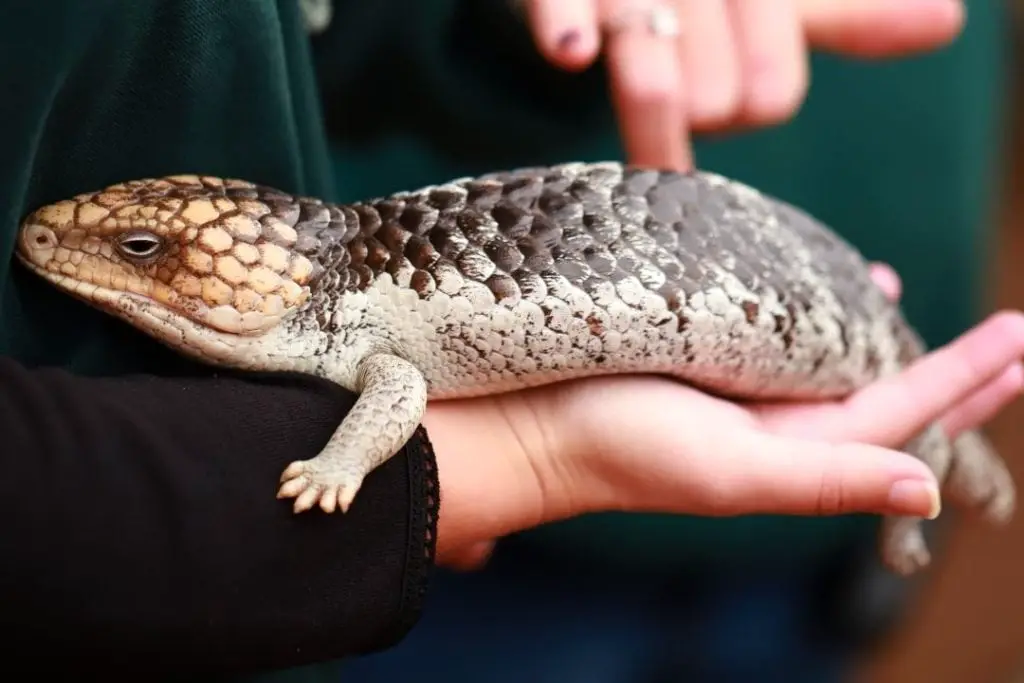
Their size makes them more interesting than geckos
Most of the other species of beginner-friendly lizards tend to be smaller such as crested and gargoyle geckos.
While they are easy to care for thanks to their low-temperature needs and high humidity, they can be fragile.
Small animals are naturally more likely to be injured by an owner that hasn’t quite learned the safest way to handle a reptile yet.
Their small size can also make it harder to notice their expressions. Learning the body language of your new pet is incredibly important to be sure you can care for them.
Blue-tongued skinks are 15-24 inches long as adults. This larger size makes them a bit easier to handle.
They are diurnal and active lizards
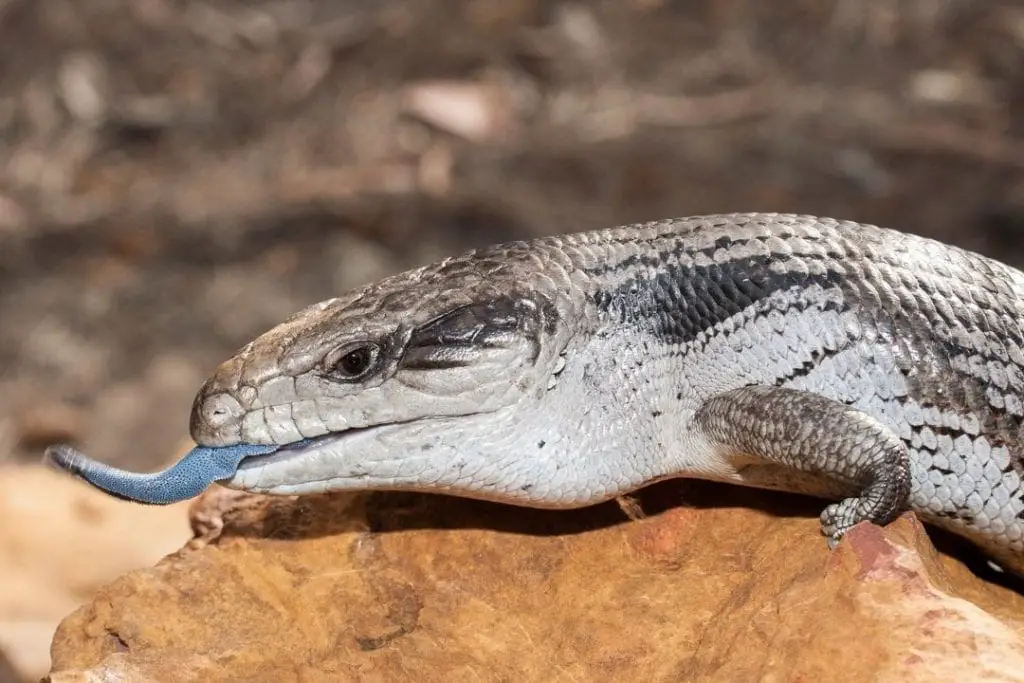
They are also diurnal, so you will likely see them more during the day when you are awake. Skink enclosures are typically placed in a room where you will spend plenty of time.
Skinks like watching humans as much as we like watching them.
This makes them an appealing pet for a beginner since they have a chance to enjoy their pet even when the animal is just going about its normal day.
Since there are so many species of blue-tongued skink, you can also find one that will thrive in your area.
It can be hard keeping a desert species in a humid area, so finding an animal that enjoys the typical humidity range of your home will make care less stressful for both of you.
Keeping the right range for temperatures and humidity tends to be the biggest struggle for a new keeper. If you pick a species that has an easy range to keep, you will be able to maintain the right conditions more easily.
Blue-tongued skinks tend to be easy to tame and are very active animals.
Wild-caught animals can be defensive, but a captive-bred animal tends to be easy to handle and care for. They are intelligent animals and tend to do well with mental stimulation.
Babies can get started on the taming journey by talking to them and spending time in the same room. You can clear out a room of any hiding places and sit with your skink reading and this will help teach it that you won’t hurt it.
They do need to be supported fully when you hold them, and many animals will come to enjoy being petted and spending time with you.
Many skinks also enjoy mental stimulation like training and food puzzles.
They are easy to feed and care for
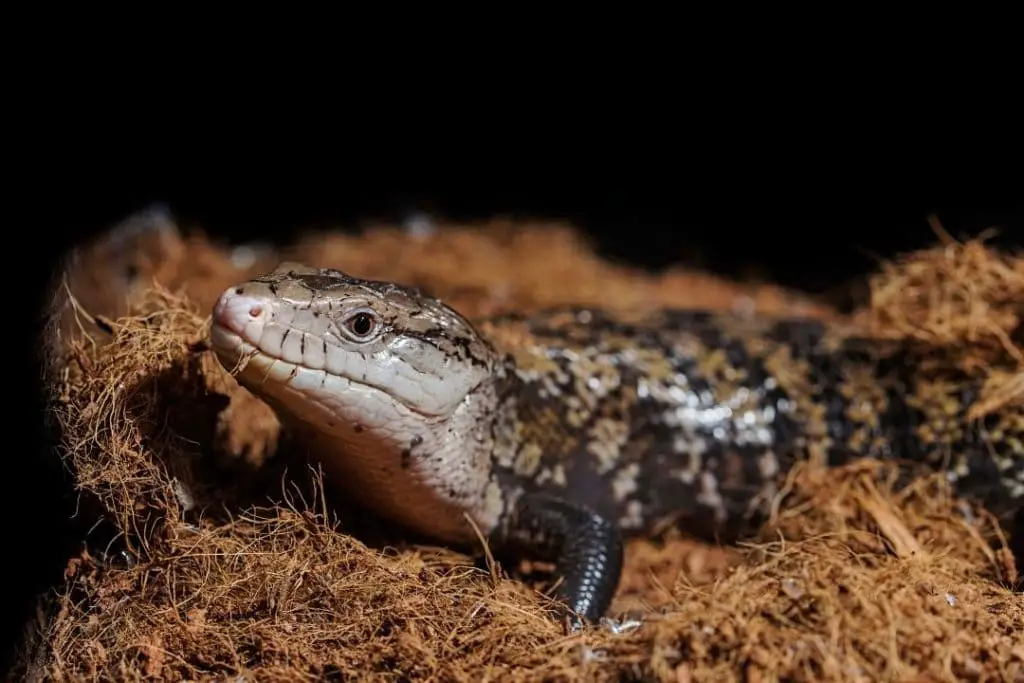
Finally, skinks tend to be easy to feed. They are omnivores aside from the shingleback skink which eats only vegetation and insects.
Skinks under a year old need about 70-80% protein and adults need 50-60% for most species.
There are prepared diets you can buy or you can make your own from safe ingredients.
Food Crumbles for Blue Tongue Skink
- Carefully formulated by nutritionists to be a balanced diet to meet the nutritional needs of Blue tongue skinks for proper growth and development.
- Contains Chopped grasses (timothy, alfalfa) to provide long-stem fiber, An important part of their natural diet.
- Contains small amounts of fruit (mango) and animal protein (Black Soldier fly Larvae) to meet their unique dietary requirements.
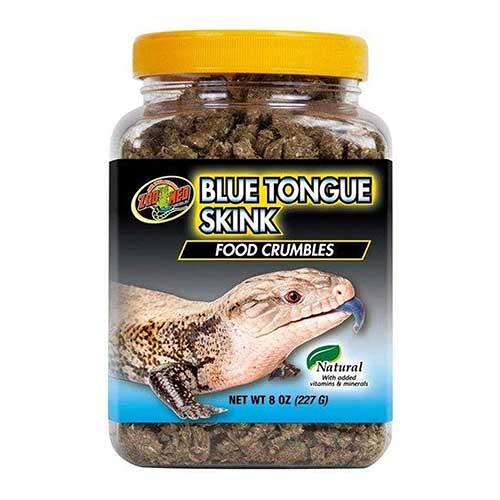
High-quality wet dog and cat foods that use as much of the whole prey as possible are also a good base diet.
You typically need to add extra vegetables to help it reach the right ratio.
This makes them very easy to feed so long as you only buy specific brands or formulas.
You also need to make sure you use UV lighting and add supplements to help keep your skink healthy. Since a skink can live for over 20 years with good care, it is worth investing in a good diet.
Factors to Consider
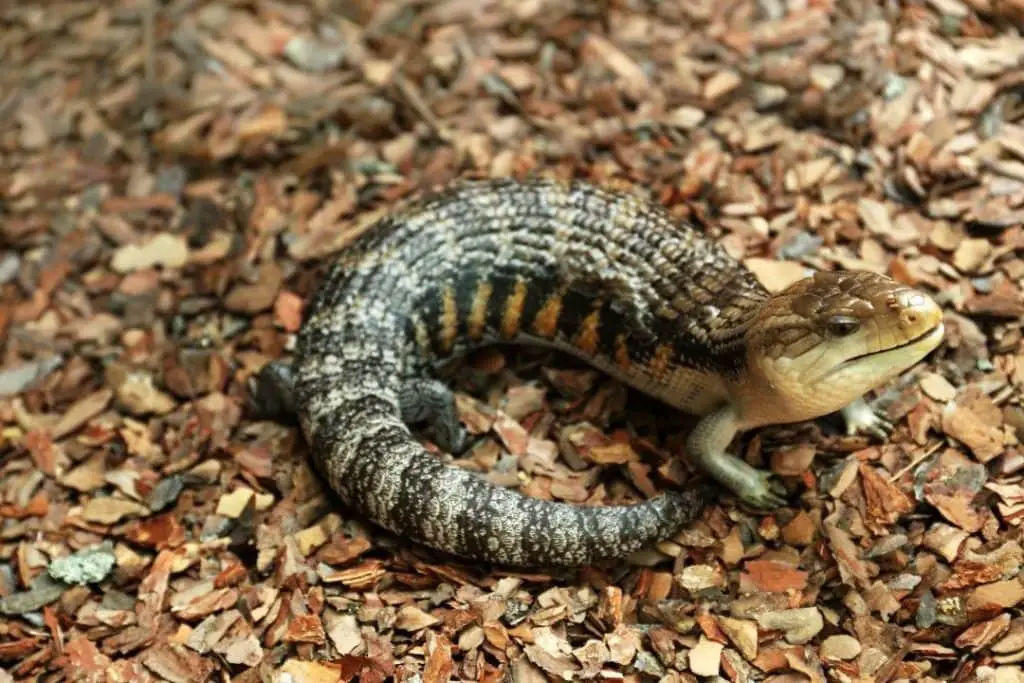
Blue-tongued skinks do make great pets. However, they aren’t right for everyone.
Most Indonesian species are wild-caught. This means that it can be a challenge to find a captive-bred animal.
Wild-caught skinks are less healthy and more defensive. A bite from an unhappy skink is painful.
Captive-bred skinks and the Australian species are a bit more expensive to buy and supply properly.
The average breeder needs to sell their babies for more than what a wild animal will go for.
Blue-tongued skinks tend to go for a few hundred dollars for an animal. Buying all the supplies such as an enclosure and sturdy enough furniture can be pricy.
If your budget is small, you may want to consider another species.
Blue-tongued skinks need a minimum of 8 feet of floor space.
The smallest enclosure you can use is 4’x2’2′. Since they are so active, more space or regular time outside of the enclosure is better for the animal. If you don’t have a lot of space, this can be a challenge.
Blue-tongued skinks do require high temperatures. They need a piece of slate or similar rock placed under their basking spot.
The surface of this rock needs to be at least 100 degrees and the air in the spot needs to be at least 90 degrees.
Australian species tend to need higher temperatures as well. You may need to watch your skink and adjust the temperatures.
You also must provide UV for your skink or it may become sick and sluggish.
Most species of skink from Australia do prefer lower humidity, but Indonesian species need the difficult combination of high temperatures and humidity to stay healthy.
This can be a challenge for a beginner. I highly advise you to spend the money to buy a Northern blue-tongued skink since they prefer it around 40-60% or one of the species that prefer it around 20-40% if you are struggling to keep the humidity in the right range.
Remember to always set up the enclosure and run it at temperature to fix any humidity issues before you bring your new pet home.
Conclusion
Blue-tongued skinks make great pets for beginners. Just remember to buy an Australian species. Some of the Indonesian species and the shingleback skinks can be harder to care for on average.
You should start off with an easy species and buy one of the more difficult species once you have some experience.
If you have any questions or comments, please leave them below.
